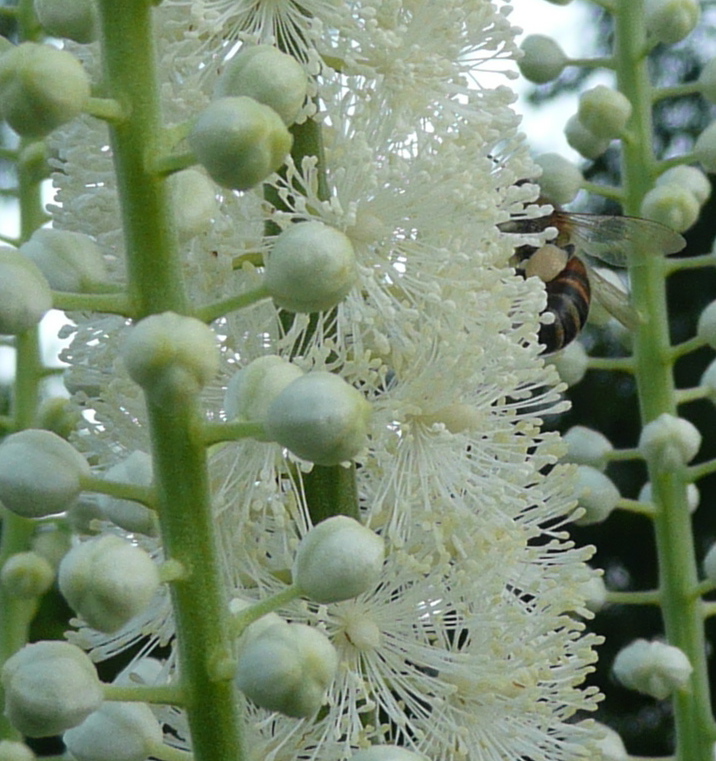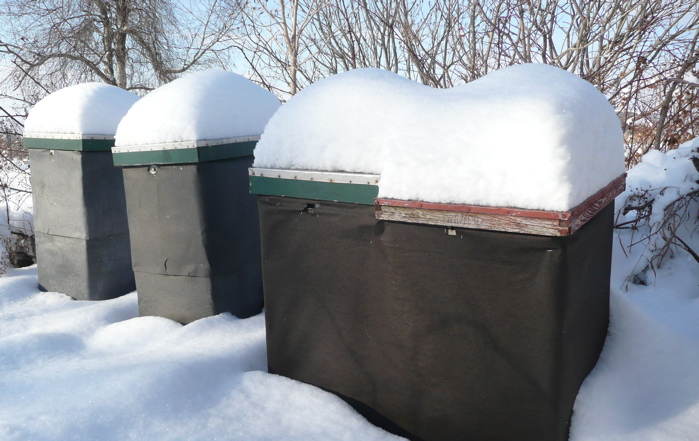Live from the hive: January 2015

“Winter Miracles” by Annie Watson, Thistle Hill Studio
It’s a miracle that honeybees can survive the long cold northern winter. They do this by clustering in a warmth-preserving ball around their one and only queen, upon whom the whole colony depends to provide the eggs for the next generation. They detach their wings from their flight muscles and vibrate those muscles to generate heat; they take turns being at the outside of the cluster where it’s colder.
Miraculous too, that around this time, in the deepest and coldest part of the winter here in the northeast, the workers, knowing that the days are getting longer and spring will come, begin to feed the queen with stored pollen and honey. She responds by beginning to lay eggs.
All of this is in preparation to build up the colony to strong numbers who, over the coming summer, can gather lots of pollen and nectar to prepare for the next winter! And so the cycle continues. Despite all that we’ve learned, the ways of the bees are still mysterious and marvelous.

